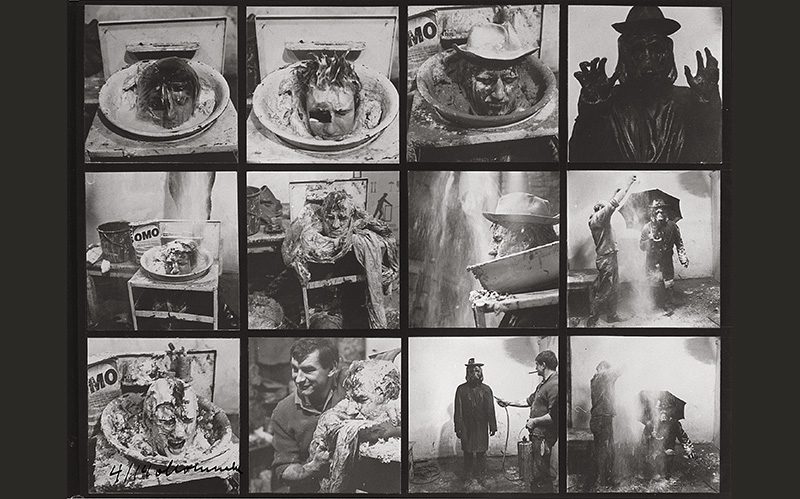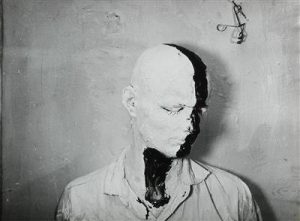
1968 – 50th Anniversary
The global emancipation wave peaked in Austria at Vienna University with “Art and Revolution”, a happening that was dubbed “uni obscenity” by the tabloids and caused wild outrage. Feminist artists too seized the momentum to pick fights with gender – bias and rigid social structures.
By Doris Krumpl
The Human Body – an Art Medium
Public peeing contests; meat dumplings flung at the elite; a man being walked on a dog leash by his mistress. All in the name of art! In Berlin and Paris the civil rights protests escalated into hard-fought street battles. In Vienna the uprising manifested itself almost exclusively – whether poetically or chaotically – through art.
“Art and Revolution” was expected to be merely an art debate event, but quickly mutated into a bizarre art happening that result-ed in the artists being declared enemies of the state. They were put on trial and sentenced to jail. The harsh repercussions prompted Oswald Wiener and Günter Brus to flee Austria, thus marking the end of Wiener Aktionismus, an influential art group characterised not least by its uncompromising artistic instrumentalisation of the human body. In retrospect, Wiener Aktionismus was Austria’s only 20th century art group of lasting relevance – and the only one to be referenced decades later by renowned West Coast artists such as Mike Kelley and Paul McCarthy.
Uni Obscenity
What actually happened in that auditorium on 7 June 1968? Peter Weibel and Oscar Wiener talked about art theory. A stark-naked Günter Brus sang the national anthem. From atop a school desk. While urinating and defecating on the Austrian flag, smearing fae-ces all over his body in the process. Parallel to this, Otto Mühl lined a group of naked students up for a peeing contest, carefully noting their results on the auditorium blackboard.
The “uni obscenity” later came to be known as the Austrian social emancipation battle’s “15 minutes of indecency”. The reasons for fighting were many: It was a clash with the father generation and the musty air of old, conservative institutions; a showdown with Austria’s World War II trauma and collective denial of the Nazi past; a revolt against the Nazi-tainted idolisation of the perfect body, against Sigmund Freud’s drab image of sexuality and lust.
Thunderbolt

Aktion Selbstbemalung II, 1965; realized price:
EUR 9.375 ,-
Günter Brus already caused big commotion with his “WienerSpaziergang” in 1965. Covered entirely in white paint with a black line splitting him down the middle like a thunderbolt, Brus strolled through Vienna’s city centre. A public scandal at the time. An even bigger scandal unfolded in 1967 when police closed the so-called “Zock fest”, after Oscar Wiener’s alias “Garth” bombarded the audience with meat dumplings.
Austria 1968 became synonymous with arts rebel-lion against the narrow confines of middle-class family life. In “Action Pants: Genital Panic”, VALIE EXPORT, a feminist icon of the period, posed for the camera wearing open crotch pants and wielding a machine gun as a manifestation of female self-deter-mination. She let random passers-by touch her breasts through a box attached to the torso, the so-called “Tap and Touch Cinema”, and took Peter Weibel out for a dog walk on a leash in the streets of Vienna.
The long-term effects of 1968 remain to be fully estimated.
Image above:
Only documented in photos: gelatin silver print from the portfolio “Actions 1966-1968” by Otto Muehl. Auctioned at Dorotheum for € 7,500











